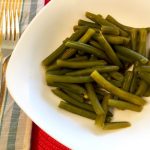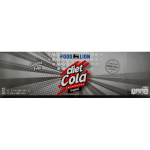Revitalize Your Health With The Nutrient-Packed Barf Diet Vegetables: Click Now To Reap The Benefits!
Barf Diet Vegetables: A Nutritious and Balanced Approach to Pet Nutrition
Greetings, Healthy People! In this article, we will delve into the world of barf diet vegetables, a popular and beneficial approach to pet nutrition. As pet owners, we always strive to provide the best diet for our beloved furry friends, and the barf diet vegetables offer a natural and balanced solution. Join us as we explore the what, who, when, where, why, and how of this innovative feeding method, along with its advantages and disadvantages. Let’s get started!
Table of Contents
Introduction
What is Barf Diet Vegetables?
Who Can Benefit from Barf Diet Vegetables?
When to Implement Barf Diet Vegetables?
Where to Source Barf Diet Vegetables?
Why Choose Barf Diet Vegetables?
How to Transition to Barf Diet Vegetables?
Advantages and Disadvantages
Frequently Asked Questions
Conclusion
Final Remarks
1 Picture Gallery: Revitalize Your Health With The Nutrient-Packed Barf Diet Vegetables: Click Now To Reap The Benefits!

Introduction

Image Source: healthline.com
The concept of feeding pets a barf diet, an acronym for Biologically Appropriate Raw Food or Bones and Raw Food, has gained significant popularity in recent years. This feeding approach emphasizes providing pets with a diet that closely resembles what their ancestors would have eaten in the wild. It focuses on raw, unprocessed, and whole foods, including a variety of meats, bones, organs, and vegetables.
Barf diet vegetables play a crucial role in providing essential nutrients, vitamins, and minerals to pets, ensuring their overall health and well-being. In this introduction, we will explore seven key aspects of the barf diet vegetables, shedding light on their significance and benefits.
1. What is Barf Diet Vegetables?
Barf diet vegetables refer to the plant-based component of the barf diet, which aims to provide pets with a balanced and wholesome meal. These vegetables are typically fed in their raw or gently cooked form to preserve their nutritional value. They include a variety of leafy greens, cruciferous vegetables, root vegetables, and herbs.
2. Who Can Benefit from Barf Diet Vegetables?
Barf diet vegetables are suitable for a wide range of pets, including dogs and cats of all ages and breeds. However, it is essential to consult with a veterinarian before implementing this feeding approach, as individual dietary requirements may vary based on factors such as health conditions, allergies, and specific nutritional needs.
3. When to Implement Barf Diet Vegetables?
Barf diet vegetables can be introduced at different stages of a pet’s life. For puppies and kittens, it is recommended to begin incorporating vegetables gradually around the age of three to four months. Adult pets can transition to a full barf diet, including vegetables, at any time, preferably under the guidance of a veterinarian.
4. Where to Source Barf Diet Vegetables?
When sourcing barf diet vegetables, it is crucial to prioritize organic and locally grown produce whenever possible. This ensures that the vegetables are free from harmful pesticides, additives, and preservatives. Farmers’ markets, organic grocery stores, and even homegrown gardens can be excellent sources of fresh and nutritious vegetables for your pet.
5. Why Choose Barf Diet Vegetables?
The inclusion of vegetables in the barf diet offers numerous benefits for pets. These include improved digestion, enhanced nutrient absorption, strengthened immune system, healthier skin and coat, and increased energy levels. Additionally, vegetables provide valuable fiber that aids in maintaining optimal gut health.
6. How to Transition to Barf Diet Vegetables?
A gradual transition is key when introducing barf diet vegetables to your pet’s meals. Start by adding small amounts of finely chopped or pureed vegetables to their regular food. Over time, increase the vegetable portion while decreasing the other components. Monitoring your pet’s response and consulting with a veterinarian throughout the process is essential for a smooth transition.
This post topic: Diet



